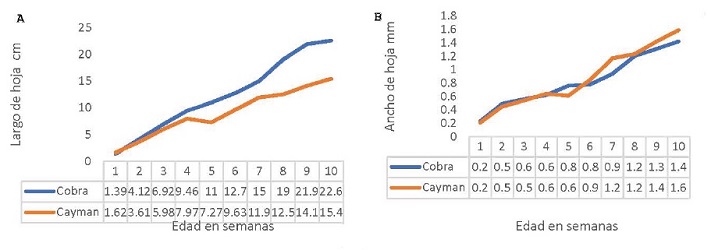Dry matter production and description of morphological components of two cultivars of the Urochloa hybrid
DOI:
https://doi.org/10.28940/terra.v41i0.1590Keywords:
cayman and cobra cultivars, morphological components, dry matter productionAbstract
The evaluation of the growth of the improved Cobra and Cayman grasses during the first ten weeks of establishment in the rainy season in the tropics are important to estimate the development of the morphological components, because through these elements it is possible to evaluate their potential biomass production available for feed the cattle. The objective of the present study was to characterize the morphological components and their contribution to biomass production at dif ferent weeks of growth of the cultivars Cayman (CIAT BR02/1752) and Cobra (CIAT BR02/1794), hybrids of the genus Urochloa during the rainy season. The cultivars were established during the rainy season and the percentage of emergence, leaf length (LL), leaf width (LW), plant height (PH), stem diameter (SD) and number of shoots (NS) were evaluated. The morphological components were determined by the destructive method, and leaf dry weight (LDW), stem dry weight (SDW) and root dry weight (RDW) were also evaluated. The data were analysed with the SAS statistical program through PROG GLM, the comparison of means was performed by Tukey’s test. The results showed the variables LL, PH, NS and LW were not dif ferent (P > 0.05) among cultivars at dif ferent weeks. On the other hand, for SD there was no dif ference between cultivars. The Cobra and Cayman cultivars had similar responses in the production of morphological components and dry matter production during the growth periods evaluated during the rainy season.
Downloads
Publication Facts
Reviewer profiles N/A
Author statements
- Academic society
- Terra Latinoamericana
- Publisher
- Mexican Society of Soil Science, C.A.

















